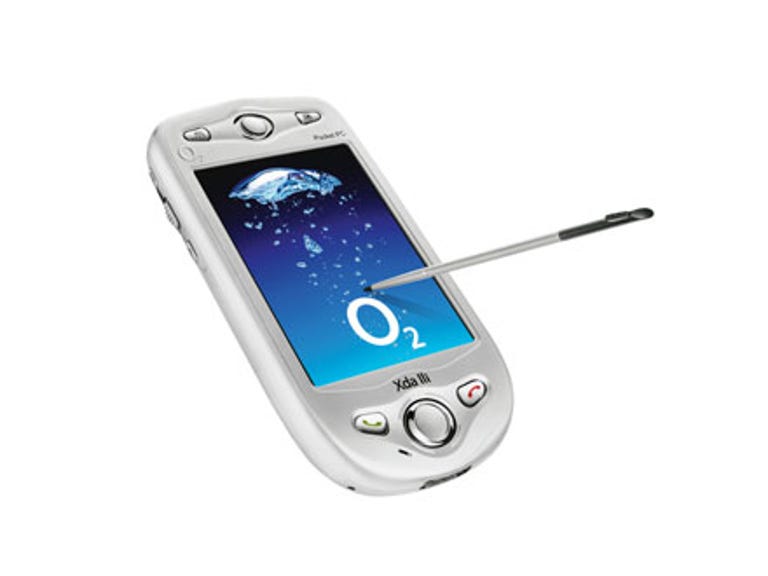 Why You Can Trust CNET
Why You Can Trust CNET O2 Xda IIi review: O2 Xda IIi
The O2 Xda IIi isn't a revolutionary addition to O2's smartphone lines, but with a better processor and simple interface it's still a very appealing device.
It would be easy to look at the O2 Xda IIi and mistakenly think you were looking directly at its predecessor, the O2 Xda II. O2's kept the same basic design for the O2 Xda IIi, which measures in at 69.9mm by 130mm by 19.9mm, weighs in at 200g and features a 3.5 inch 65,536 colour LCD screen. The stylus sits neatly on the left hand side, with the right hand side featuring quick access to the unit's camera, voice recorder and jog dial. The front of the smartphone features a very simple array of buttons, including a clickable selector at the base. Unlike the Xda IIs, there's no slideout keyboard.
Like most larger smartphones, the Xda IIi feels bulky as a phone, but is suitably sized as a PDA. If size is really a concern, you may be better suited to O2's Xda II Mini.
The Good
The Bad
The Bottom Line
Features
It's in the feature set that the Xda IIi really stands out from its competition, and indeed from O2's previous smartphone offerings. Underneath the shiny exterior is an Intel XScale PXA 272 520MHz processor and 128MB each of internal ROM and SDRAM. That can be extended via the SD/MMC card slot that sits on the top of the phone.
As a phone, the Xda IIi is a tri-band (GSM 900/1800/1900) phone with GPRS capabilities. From a pure data pushing perspective, it's nicely accentuated with both Bluetooth and WiFi connectivity, although on the WiFi side, it's only an 802.11b connection. The inbuilt camera is a 1.3 megapixel model that'll also double as an MPEG4 video camera.
On the software side, the O2 Xda IIi runs Microsoft's Windows Mobile 2003 Second Edition for Pocket PC Phone Edition, possibly the most verbosely named operating system that Microsoft's ever offered. As a phone OS, it's usage is currently trailing Symbian (used primarily in Nokia's phones) by a very large margin, but it does benefit somewhat from having inbuilt synchronisation facilities with Windows PCs, as well as a mini-suite of cut-down Microsoft Office applications including Pocket Word, Excel and Outlook. For the time wasters amongst us, it's also got the highly addictive Jawbreaker software built in.
Performance
As a phone the O2 Xda IIi performed well enough, although you'd expect that of pretty much any smartphone these days. It did take us some getting used to correct ear placement, but that's a common factor with many smartphones, as you're essentially putting a brick up to your ear. Working out where the speaker is on a brick can take a few seconds. Similar to most other touchscreen phones, you'll also find the screen quickly picks up smudges if you use the onscreen dialling pad to make the majority of your calls.
The combination of a high speed (for a PDA) processor and a solid wodge of memory makes the O2 Xda IIi a solid performer as a PDA, although it didn't quite wow us the way we might have reasonably expected given its extra processor grunt. We experienced more than a few lockups with the unit, and intermittent slowdown with most applications, but it's unclear whether this was a function of it being an early release model -- a fact which it reminded us of every time we booted it up -- or whether it was an operating system level problem.
Like most phone cameras, the O2 IIi's camera performance varied wildly. As a 1.3 megapixel camera it's technically capable of producing fair photographs, but once you add in variable lighting, hand shakes and any kind of moving photographic target and you'll find yourself awash in muddy pictures. One great advantage with a phone camera of this type is that it's easy to show the pictures you take around a large pub group without having everyone squint around a tiny screen. The inbuilt software allows you to quickly switch between picture, video, contact picture and several fun picture themes -- basically predetermined outlines and frames for the photos you take.
The O2 Xda IIi worked well in a wireless environment, effortlessly connecting to our test wireless network. It is worth noting, however, that the inbuilt networking is only 802.11b. You're hardly likely to hit the top of the 802.11b performance barrier on a phone, but if your wireless network is otherwise 802.11g and set up for compatibility only with 802.11g equipment -- an option on many routers to improve performance -- you'll have to step the router back a touch.
The Xda IIi's 1300 mAH lithium-ion polymer battery lasted around four days of moderate use between charges with wireless networking switched off. If you're likely to be using either the bluetooth or WiFi connectivity on an ongoing basis -- or if you're just forgetful and leave it on all the time -- you can expect that figure to dive sharply.


